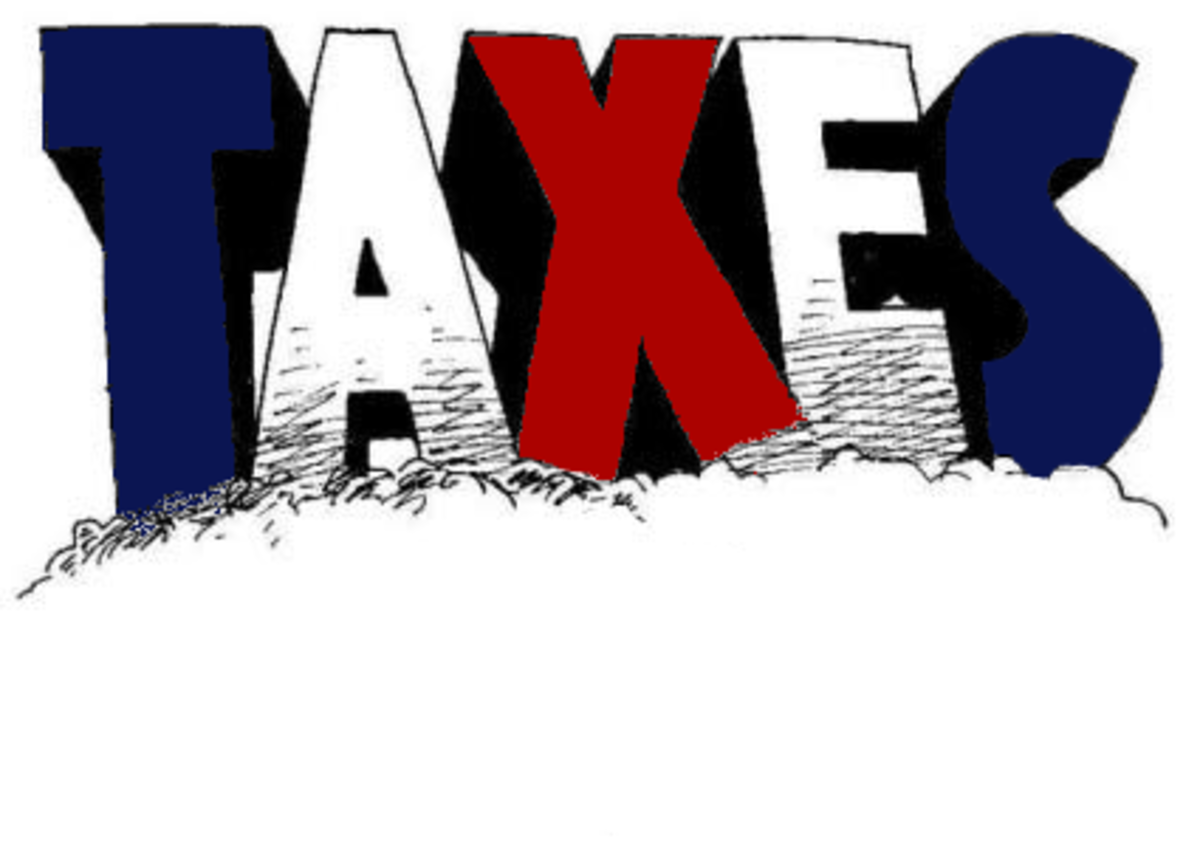Creating your own business

To become an entrepreneur must take into account factors that affect your life in the future. The first is to analyze if you have the qualities needed (financial, responsibility ...) and take account of resignation to the current position.
THE INITIAL IDEA
To create a company must start with an idea (product innovation, service to do ..) that can be an innovation on products on the market, or improve an existing product.
To create a company must look at innovation. The employer must analyze the changes in the environment, for example, these are the most significant in Spain:
• Change in personal income.
• Change in leisure time.
• Change in educational level.
• Change in the labor market
· Cambo in the economy of the country.
Once you have clearly defined the idea is to perform an analysis to identify whether or not one believes:
1. Demand Analysis.
Analyzing the location, quantification, purchasing power, habits ... and analysis of balance and stability, by studying the growth capacity, substitute products, the durability of the products and if it is a necessity or luxury.
2. Competitive analysis.
Noting the type of companies, your organization the degree of concentration and administrative regulation.
3. Study of location
Place of supply of raw materials, proximity to potential customers, infrastructure in the area of labor recruitment, competitive business situation and look for areas with subsidies.
4. Study of the capital required.
Not the same at all times. By rotation the employer may make a forecast which will be his position in the market.
LEGAL FORM OF ENTERPRISE
Keep in mind the following criteria: a distribution of power, the type of financing, the size of the company and the tax cost.
In a contract involving at least 2 people with the intention of providing a service.
Classification of contracts:
° typical and atypical.
· Solemn and not solemn.
· From provision and obligation.
· Onerous and free.
· Complete and incomplete.
• Determine or contingent.
Types of company
There are two types of entrepreneur: individual and collective.
Individual entrepreneur: His liability is unlimited and runs the business. The name of the company will be the legal name of the holder. Registration in the Register is optional. There is limited capital.
Civil Society: Has free name. Registration in the Register is voluntary.There must be at least 2 partners. Members can contribute labor, money, property or rights. The third party liability is joint and unlimited.The partners are the general managers. There is no limit to the social capital needed. In its constitution a 0.75% on the valuation of contributions in respect of the transfer tax. They can not have a commercial and its benefits become part of the taxable personal income tax of each partner.
Partnership: Its name is the name of the partners or by some and "CIA." Its constitution requires a public deed and registered in the Register. The minimum number of partners is two, with no maximum.Members can contribute labor, money, property or rights. Personal liability is unlimited for all partners. There is no limit to the capital. A 0.75% of its contributions in respect of the transfer tax. There are industrial partners, which provide work and have to deal with debts.The benefivios obtained taxed at 35% in corporation tax.
Limited Partnership: Your name is the name of the general partners and "Limited Partnership." We must make and registration Deed the Mercantile Registry. The minimum number of partners is one group and another backer, no maximum number. The groups provide labor, money, property or rights. The limited partners contribute only goods, money or rights. The collective responsibility is personal, supportive and unlimited and the limited partners is limited. The management shall be for the collective. Companies limited by shares are those in which the limited partner capital stock is distributed, and have a maximum capital of 50 million pesetas. In the income tax the tax rate applied is 35% as well as collective.
Company: Has the term free, provided they do not repeat the name already selected by another company. Deed must be made and Registration in the Register. The minimum is 3 members, who will make their money, property or rights of financial content. The liability is limited. The management shall be appointed administrators.Important decisions taken by the general assembly of shareholders.The representation is delegated to managers. The minimum capital is 10 million and a minimum payout of 25%. Share capital. The ITP is 1% of the nominal capital. The benefits will be taxed at 35% corporate income tax.
Limited Liability Company: Has free name, if different from another, and is accompanied by SL or SRL Deed requires mandatory and Registration in the Register. Can be from 2 to 50 members. Which may contribute money, property or rights. The liability is limited.Normal management and administrators make important decisions are taken together as partners. The representation corresponds to administrators. The maximum capital is 50 million pesetas and shall be fully paid. The capital is divided into equal shares, individual and can accumulate more. Taxation in the act of creation is identical to that that the limited partnerships, and the same applies to the Tax on Companies.
Cooperative Society: With free name, if different from another, and "cooperative society" and the degree of responsibility. Be constituted by Deed and recorded in the Register of Cooperatives. And making right in the Commercial Register. The minimum number of members is 7. Members may bring money, movable and immovable property and credit. The liability cooperatives with unlimited liability is personal, limited and joint. In those limited only respond with their input. The representation is carried out by its president at least in cases of appointment of a management team. Have to pay up at least 25%.Workers may obtain loans from the cooperative. The maximum capital a partner must not exceed one third of the total capital. The tax rate for corporate income tax is 18%, except in the case of credit unions, quoted 26% of their profits.
Company Business: Title free, match, and accompanied by SALShould be established by Deed and enroll in two records in the SAL and Trade. The minimum is 3 Partners. Members must be at least 85% of permanent workers or 75% if less than 25 working partners.The contributions of partners can be your money, property and economic rights. The liability is limited. Management bodies and representation are identical to the corresponding corporations. The shares constituting the capital will be registered, with no minimum or maximum limit to the amount of capital. At least 51% of the share capital must be owned by workers. There is a discount of 99% in the transfer tax. Workers may obtain loans in society. Industrial partners may not have more than 25% of the capital. This limit is raised to 49% in the case of majority government, autonomous regions and local entities.
TRADE POLICY
1. The market. Marketing.
• The study of the markets.
• The analysis of consumer behavior.
• The choice of products.
• The choice and establishment of distribution channels.
The policies for prices.
• The advertising.
• The sales promotion.
· The sales techniques.
· The after sales services.
2. Business objectives.
To build a trade policy, we must depart from business objectives, namely in view of the knowledge of our market potential for a raise.
The sales forecast for firms that produce goods should be done based on:
• Knowledge of all potential purchasers of the product.
• Knowledge of consumption.
The outlook for companies producing consumer goods will be based on:
• Knowledge of consumer opinion about the product.
• Knowledge of consumer behavior.
Having established these objectives, we must specify a trade policy based on:
Product · Policy
Price · Policy.
· Policy distribution.
· Policy communication and advertising.
Product policy.
1) Consider issues such as:
• The presentation of the product or service.
• The name or brand of product or service.
• The after-sales service.
• To provide assurance and quality.
2) Each product goes through 4 distinct phases:
• Launch
• Growth
· Maturity
· Decline
3) Each product has a function:
· Provide benefits.
· To attract customers to the company.
Pricing policy.
If done in terms of manufacturing cost should be borne in mind:
• That the product cost = purchase cost + procurement cost + production cost + distribution cost + administration cost.
· Selling price of the product = Product Cost + Profit.
If done in terms of demand must be analyzed:
• That the price may be decisive for the introduction of a product on the market. It can therefore be favorable lower prices.
• O if instead the quality is what matters to the product price can not be very important.
If done in terms of potential clients must know the maximum and minimum that customers are willing to pay.
Distribution policies, communication and advertising.
The distribution channel should provide:
• That the product is available when the customer wants to buy.
• That the product is available wherever the customer wants to buy.
• That the products arrive in sufficient quantity to customer demand.
Distributors are what make the intermediate stage. Is made according to:
• The transport of products to their markets.
• Activities related to promoting each channel.
· Travel and criteria for storage of stocks.
· Terms of sale and prices of each channel.
Based on the sales forecast be determined:
• The number of outlets to cover.
• Your geographic location.
• The choice of distribution channel, which can be open or closed.
Communication and advertising policy.
Advertising meets 3 important areas: communication, information and encouragement for sale.
The different types of advertising can be classified into
a) Depending on the purpose of advertising:
· Advertising of products.
· Advertising business.
· Advertising sector.
b) Depending on the medium used:
• Television.
· Radio.
· Press.
· Movies.
° VALLEYS.
· Posters.
° Handout.
c) Other classification:
Second instrument of paid promotion.
· Help information distributors (instruction manuals)
• The unpaid advertising.
· Other promotional activities (presentations, conferences and celebrations).
The material resources of the company.
1. Geographical location:
Factors to consider:
· Proximity of the potential market.
· Proximity to suppliers of raw materials.
· Proximity and skilled labor.
· Expectations of local market growth.
• The infrastructure of the area.
• The future adequacy of the infrastructure of the area.
· The government's incentives to businesses locating in certain areas (Shares of industrial location and employment promotion).
2. Premises, buildings and grounds.
3. The machinery and supplies (technology)
4. Procurement of stock. (Have the necessary materials at the lowest cost)
5. Storage.
HUMAN RESOURCES ENTERPRISE
A key factor is the selection of staff.
Staffing:
· Determination of the professional and personal needs of the new company.
· Linkage between business and workers.
· Cost of staff.
· Search and selection:
1. Determination of requirements to be met by candidates
2. Ads asking people required.
3. Selective tests.
4. Personal interviews.
5. Application firms reporting to the background of the person to hire.
Organization chart.
Organizational process of dividing and grouping the work done on individual tasks and to define the persons to accomplish those tasks.Can be of two types:
• The Functional: The similar work is allotted a section dependent on a focal point.
• The Division: From the establishment of small, autonomous units around the general structure of the company, can be performed according to different criteria.
Role of different departments of the company
· High Address: setting the general policy of the company and the supervision and approval of the various departmental policies.
· Department of sales: Its function is to obtain maximum benefit in sales.
· Department of production: setting production quantities, quality and deadlines to be met.
· Department Purchasing: Its function is to satisfy the needs of the production department at the time, quantities and of sufficient quality, treating the costs are minimal.
· Department Financial and Administrative: supporting the needs of other departments.
The financier will provide the funds necessary for economic activity.
The administrative department shall be to support the activities of other departments.
TYPES OF EMPLOYMENT CONTRACT
Indefinite employment contracts
· Contract to a person over 16.
· Contract still unemployed more than 45 years.
· Contract to disabled.
· Contract with unemployed women in certain professions or trades.
· Contract for fixed activities discontinuous nature.
Temporary work contracts
· Contract trial work.
· Contract building measure unemployment.
· Contract practices
· Contract for training.
· Contract for work or service.
· Contract possible.
· Contract for interim.
· Contract launching new activity.
· Contract relay.
Public assistance is available, which are:
· Subsidies of employer's contributions to Social Security.
· Subsidies lump.
· Aid training.
· Tax allowances.
FINANCIAL PLANNING INSTRUMENTS COMPANY
The basic tools are:
1. The forecast of cash.
It is the anticipation of inflows and outflows of money from a period of time, and it indicates the cash requirements that we will have at all times.
Its components are:
· The collections.
· Payments.
2. Income statement.
Find the income statement and profit and loss account.
The operation includes the results, charges and income relating to the normal operation of the company.
The profit and loss account also includes the results pertaining to the normal operation of the enterprise, any other, considered atypical, have been obtained outside the scope of normal business activities.
Both distinguish two parts:
• The MUST.
• The HAVE.
3. Balance.
It may be temporary or Situation. Both types allow us to determine that:
• The details of the rights and obligations of the company.
• The value of the company.
• Media and financial resources.
• The value of investments.
· The sources of investment financing.
• The balance or imbalance between self-financing and external financing.
• The level of financial health of the company.
Balance in the structure of two major sections:
• The Active
• The Passive.
Analyzing the balance we know as the balance of the company. We also know the performance and profitability.
Yield = Net Operating Profit / Assets
Profitability = Net profit after tax / equity.
LAWS TO THE CONSTITUTION OF THE COMPANY
Formal constitution of society
The workload for the new employer for the legal constitution of the society are:
· Application for specific licenses.
• Certificate of the selected name is not used by another existing company.
· Grant a public deed.
· Registration in the Register of Industrial Property.
· Registration in the Register.
· Settlement of Transfer Tax.
· I.V.A. Liquidation
· Application for tax identification card and tax ID.
· Application of high tax license.
· Application registered in the Chamber of Commerce.
· Request for qualification for industrial corporations.
· Request for municipal licensing works.
· Request a municipal license to open business at City Hall.
• Declaration of openness.
· Registration in Social Security and request the employer identification number.
· Affiliation of workers to Social Security.
· Application of high local taxes.
· Acquisition and legalization of books required and guestbook and registration.
· The cooperative applied for registration in the Register of Cooperatives and must also apply for qualification as well as the appropriate tax benefits.
MAJOR TAX CHARGEABLE BY THE COMPANY. THE I.V.A.
The value added tax is an indirect tax levied on consumption and taxes the supply of goods or services supplied by businesses or professionals as well as imports of goods regardless of the status of the importer.
THE INCOME TAX AND LICENSE TAX
Corporate income tax is a levy of direct and personal nature levied on corporate income and other legal entities. Is required throughout the fiscal.
Business license tax and industrial: It is a real character local tax levied on those activities and imposed the mere exercise of them.
MUNICIPAL TAXES
Tax Filing
The taxable event tax filing for the use or enjoyment of commercial or industrial purposes and the exercise of professional premises of any kind located in the municipality.
Advertising tax
Impose on the display or distribution of signs and posters that aim to present items, products or activities of an industrial, commercial or professional.
PERSONAL OPINION
Personally, I think this book can be of great help to a person who wants to start his own company because it gives you all the very detailed steps for how to establish it and to have a good running and succeed.
Detailed in this book comes out everything we have and we are taking in class. And when I read it and summarize it paid particular attention to the balance because it's what we focus now in class and the book is also very well explained.
The downside of this book is that it is not to summarize it is all theory and very important, and therefore has taken me a lot and that I've had to jump a lot.
I keep this book in the future if I have intention to start a business, or an acquaintance of mine, because it can be very useful and necessary.






